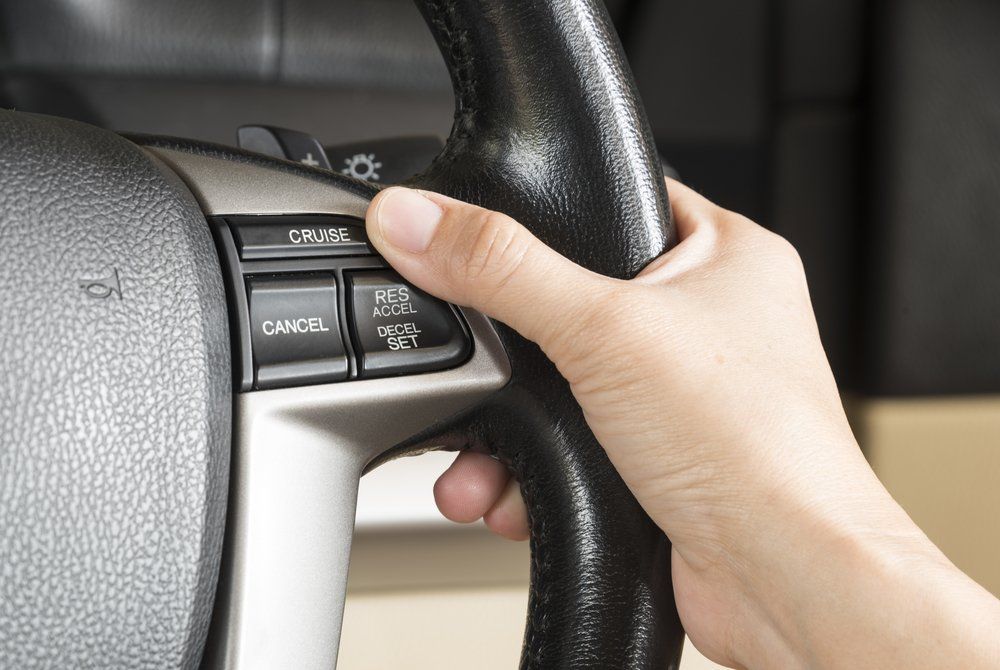Auto Accident Attorney: How to Safely Use Your Vehicle's Cruise Control
Cruise control has become a critical feature which is widely used in most vehicles on the road today. It's used to maintain the speed of the vehicle automatically by controlling the accelerator. Cruise control is specially designed to reduce drivers from fatigue on a long journey. Listed below are the tips to safely use cruise control on your vehicle.
Take Control of Your Brakes
One of the most important steps you must follow while using cruise control is that you must keep one foot on the brake always. While the same is not applicable for the accelerator, but controlling your brake with your foot will minimize the risk of accidents.
The fact is, when cruise control is engaged, most likely your vehicle must be at decent pace cruising along a highway without much traffic. Hence, if any situation arises to which you may need to respond immediately, you must be able to lower your car’s speed by terminating cruise control.
Even then you might get injured due to someone else’s carelessness. In such a case you should consult with a personal injury lawyer to determine the best way forward.
Appropriate Use of Cruise Control
Cruise control is usually used on highways and a long straight stretch of roads. Engaging cruise control can be risky if you are not able to drive comfortably at a steady speed. While many people feel they can use cruise control anywhere, it should be avoided on stretches that are curved or uneven.
When it comes to weather, you must not use cruise control in stormy weather, including heavy rain, snow, and hail storms. Also, avoid using it in heavy traffic. On slippery roads, rapid changes in tire traction may cause the wheels to not grip properly. You may lose control in such situations, resulting in accidents. In case you meet with a car accident, contact your auto accident attorney for claiming insurance.
Stay focused and Stay Within the Speed Limit
While cruise control eases driving, it doesn’t give you the right to lose your focus on the road. Many people stop paying attention to driving while cruise control is engaged and stay within the specified speed limit.
You must realize that engaging cruise control doesn’t certify that you drive recklessly. The purpose of cruise control is that you can drive on highways without keeping your foot at the accelerator. You must always maintain the speed limit and operate your vehicle while concentrating on the road.
Resuming the Set Speed
Applying the brake after setting your cruise control at a specific speed will shut off the cruise control. But you need not reset it for resuming the speed. In most vehicles, when you start driving at approximately 25 mph or higher, you must press the RES+ button on the steering wheel. Your vehicle will get back to the specified speed automatically. Every vehicle is different, so you must read your vehicle’s manual to understand the working of its cruise control system.
Increasing or Reducing Speed While engaging Cruise Control
In most automobiles, the cruise control operating buttons are on the steering wheel. To increase the speed, press and hold ‘+’ button on the steering wheel until you reach the desired speed and then release the button. Press and hold the ‘set’ button until you attain the desired lower speed. While this is the general rule, you must refer to your Vehicle’s Manual. If you need to increase your speed, you would need to push the accelerator pedal to increase your speed. When you take your foot off the pedal, your vehicle will slow down to the cruise speed you set earlier.
Engaging Cruise Control on Hills
This depends on various situations such as the speed, the height, and steepness of the hills. While engaging cruise control on hills, you must also keep your foot on the accelerator for maintaining the speed of your vehicle. While traveling downhill, you must slow down by shifting to a lower gear. If you find it too much of a hassle, you must avoid engaging cruise control system on steep hills.
Though the use of cruise control makes your life comfortable, you must also ensure that you are alert and focused while driving. Keep your body appropriately positioned and respond to the circumstances accordingly while motoring. However, if you happen to require the need for an attorney due to a car accident, contact Alvin F. de Levie & Associates at 844-777-2529, immediately after receiving first aid. We represent clients throughout the state of Pennsylvania and welcome every opportunity to examine your case and offer you personalized legal advice.






























